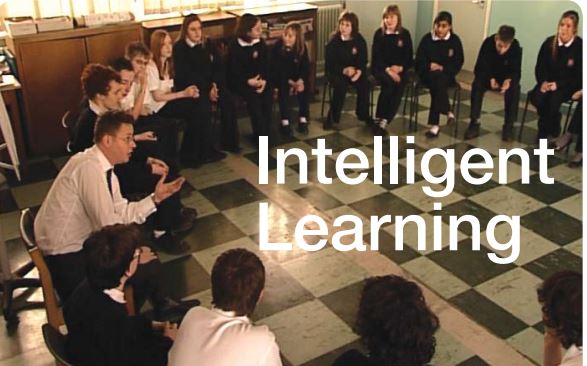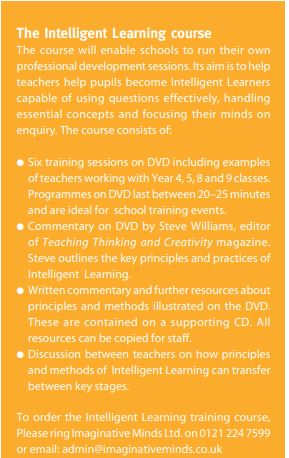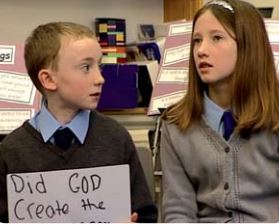
Teachers are under pressure to cover a crowded curriculum and hit targets. This high-risk, high- pressure environment can lead to knowledge cramming at the expense of learning to learn. Yet teachers also want their pupils to become effective and independent learners. So an important question we need to ask is: ‘What do pupils who can think and learn for themselves do that is different from those who can’t?’ I suggest the following four characteristics of pupils who I call ‘Intelligent Learners.’
- They use questions consistently to further their thinking
at every stage of learning - They organise their thinking by making connections
using concepts such as same, different, alternative, reason
and conclusion - They explore their thinking through dialogue with
others - They use exploratory dialogue as a model for their own
thinking

Intelligent learners who exhibit these characteristics are not people with superior and innate brainpower but
whose minds are alert and active. Intelligent learners are willing and able to think for themselves. How then, can teachers help their pupils to become intelligent learners? This is the subject of a new DVD-training course from Imaginative Minds Ltd. the publishers of Teaching Thinking and Creativity magazine.
The course consists of six programmes on DVD with support materials on CD-ROM. Together, they explain the principles of Intelligent Learning and provide teachers with Can teachers help pupils to think and learn for themselves? Steve Williams introduces a new video-based training package to promote curiosity, independent learning, good dialogue and thinking skills in key stages two and three techniques to foster it in pupils. The teachers featured in this DVD teach to enable intelligent learning in standard lessons or through special initiatives such as philosophy for children. They have found that their pupils really are able to learn for themselves and are better prepared to get the higher exam grades that depend on advanced levels of conceptual thinking. As Doug Paterson, one of the teachers featured in the video says:
‘I would argue I’m going to get a more thoughtful and therefore a better answer in an assessment or an exam question, from students who have really thought through the question, reflected on the question, thought about the quality of their own reasons, thought about the quality of their own conclusion, had it mentally challenged in their own minds because they are used to having it challenged in class; they will write a better answer, they will get a higher mark, they will do a better exam.’
Questions and questioning
The first programme of the course explains the concept of Intelligent Learning and highlights the expected benefits. The second provides ideas to help pupils catch the questioning habit. We see pupils’ analysing different kinds of questions and working to understand the functions they fulfil. There is also a focus on the ways questions can initiate the sort of thinking and learning that connects lesson topics with pupils’ own concerns and interests. So we see pupils in primary schools discussing their ideas about ‘feeling powerless’ and connecting those with the popular picture book Willie the Wimp by Anthony Browne. We see year nine history pupils discuss their own question: ‘In war who is innocent and who is guilty?’ They will later use their conclusions to organise part of their study programee on the First World War. Intelligent learners question consistently, not only to initiate learning but also to keep it going. It’s important to stress this ongoing nature of questioning. It’s essential if we want to foster independent learning. In the DVD it’s argued that if pupils don’t catch the questioning habit and become able to use questions thoughtfully at every stage of learning, they will never be able to think and learn for themselves. The DVD shows teachers helping pupils to use questions consistently and effectively.
